|
BEHIND THE GIANT WALLS
|
|
INSIDE TIHAR
|
|
Tihar Jail is one of the largest prison complexes in the world, holding over 12,000 undertrials and convicts, nearly twice the sanctioned capacity of 6,250 inmates. There is a story in every cell, in every corner of this mammoth jail. But the one we went looking for was in Central Jail number 2—for convicts with life terms—where different factories gainfully engage those serving their sentences, remunerating them for the job they do. Overall, a range of activities keep the prisoners active, provides them a second chance in life, and allows them to walk a path from which they had erred. For much of the reforms, the credit goes to Director General of Prisons, Mr Neeraj Kumar, who helped us peep into a world beyond the giant boundary walls. A hugely fortressed world that is otherwise not easily imaginable from the outside
|
By Sayantan Chakravarty
Photographs taken by M/s Nirmal Vision
|
|
|
|
“We who live in prison, and in whose lives there is no event but sorrow, have to measure time by throbs of pain, and the record of bitter moments”
—Oscar Wilde, 19th century Irish poet
|
|
|
Incarcerated for several acts of indiscretion, the aristocratic Irish poet spent some of the last years of his life in prison, sentenced to some seriously hard
labour, deeply exhausted physically and in great emotional pain. If there were doors open to prisoners in the 19th century to find a way out of their fettered misery, and the scary solitude that made up their existence—even inside the less crowded, less intimidating British prisons of yesteryears, we do not quite know.
But times have changed, even inside Asia’s largest prison, Tihar Jail, known to harbor over 12,000 undertrials and convicts from far and wide. And so have changed, immensely, the methods of engaging today’s prisoners. Even lifers—those serving out life sentences for murder, terrorism, rape, contract killing, robbery, kidnapping, hijacking, and other acts of heinous crime—are getting a second chance at life. The idea inside Tihar Jail is to reform fallen men, and make them look deep within and find ways to salvage whatever is left of their lives. A board on a wall inside Asia’s largest prison sums up the new thinking aptly. It says, “hate crime, not criminals.” Another says, “Give us love, we’ll give you a better society.”
|
|
|
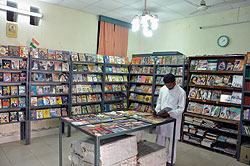 |
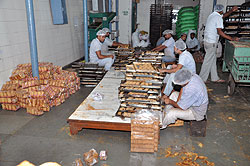 |
| At the library: Reading is an essential part of the Inner Growth story |
Bakery |
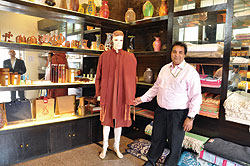 |
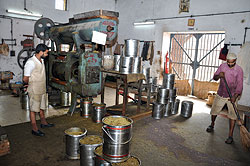 |
| TJ’s: Competing with the best |
Mustard oil extraction |
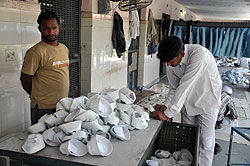 |
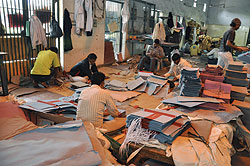 |
| Shoemaking unit |
Working to meet orders for millions of file-covers |
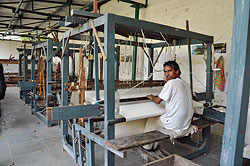 |
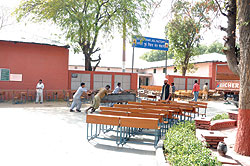 |
| A man works on the powerloom |
Double desk and chair sets being made for Delhi Government schools |
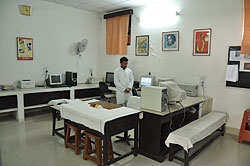 |
|
| Computer Room |
|
|
|
|
Tihar is a correctional jail, and, therefore, love and compassion are two of the abiding healing methods. From music therapy and dancing to meditation, yoga and reading books, opportunities for change and inner discovery abound. Heralding this significant reform for over a year and a half, and playing a critical role in finding avenues for Tihar prisoners to express themselves meaningfully, is Mr Neeraj Kumar, Director General, Prisons (see interview), a top-drawer police officer with a record of tracking down criminals at district, city, state, national and international levels with a degree of brilliance and integrity that is rare and unmatched. And now, after years of hunting down the crooked, the wicked, the scheming, the ruthless and the wily—white-collared, or dark—Mr Kumar is focused on reforming that very breed which is dying each day inside prison to somehow, desperately, get a second chance at living. History will tell us that men have found new meaning in their lives, broken away from the past, have come face to face with themselves, turned new chapters, mellowed and softened inside prison walls, and Mr Kumar is acutely aware of all these possibilities. At Tihar, he’s shaping a powerful reform among men, and women, where the once haughty, the once hardened, the once pathological, the once incorrigible are now turning into living lessons in humility.
Hitherto ostracized Tihar-ites now find jobs with several companies, a phenomenon unheard of earlier, given the stigma attached to a jailed criminal. Companies that have come for on-campus recruitment have realized that people who have once fallen have learnt only too well the virtues of proving themselves again and again. “They are eager and driven to rule out chances of any blemishes in their working life. More than anything else, they want their characters not to be questioned again, so they turn into good workers,” says Mr Kumar, sitting next to a huge blackboard that is updated each morning with a slew of alphanumeric information about the prison. The information relates mostly to the number of inmates inside various jails, including the one for women and adolescents, the number of staff deputed at each jail, the list of suspended staff. Taking a look at the figures is daunting enough, it sinks in quickly that managing Asia’s largest and highest-security prison is not for the weak-hearted.
The Government spends, overall, Rs 145 crore every year on Tihar Jail. This includes a daily expenditure of Rs 22.5 on the upkeep of an undertrial and Rs 25 on that of a convict. High-profile prisoners like the ones who were jailed for serious frauds during the Commonwealth Games, those sent to judicial custody in the 2G scam, and several other notorious figures, many of them from the political fraternity are part of this average spend. There is nothing like a political prisoner, everyone is treated equally. But, of course, care is taken to ensure that some of the high-visibility inmates are secured from attacks by fellow inmates who may be politically or criminally motivated.
The drive from the DG’s office to Central Jail No. 2 takes an eternity—it must be about four kilometers away, and all within the prison precincts. Through a series of high security gates, one is able to get inside Central Jail 2. Inside it there is access to the main factory complex. All the factories here engage lifers, the ones destined to spend the longest period behind bars for the gravest of offences they’ve been found guilty of committing. The environment can easily take you aback, green manicured lawns, several bottle-palmed roads, and neatly arranged flowers are something you least expect inside a prison. But the upkeep is managed well by the prison staff and the prisoners themselves. It is really quite clean and pollution levels have dropped to a fraction of what we have outside the complex.
The lifers working away in different activities are a lesson in humility. Whether piling up cans of mustard oil that are coming out of large oil extracting machines, preparing confectionary, assembling designer beds, fashioning exquisite furniture that will be sold at the jail’s much publicized and branded outlet, TJ’s, carving wood to meet an order of 120,000 desks from Delhi Government schools, cutting and machining shoes, working on huge power looms, preparing file covers for the courts in Delhi using mostly damaged hosiery, the Tihar inmates are now giving back to society in the best way they can.
In the end it is about one’s Karma. The inmates are where they are today because of their past actions. But what matters now is what they sow today. So shall they reap in lifetimes to come.
|
|
|
|
|
|
April 2012
|
|


|
|
|
|